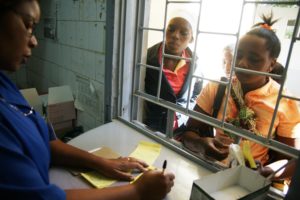Sheena Patel, Technical Advisor, and Kiley Workman, Project Associate

Although the global community has had significant success in reducing maternal and child deaths in the past two decades, they continue to die of preventable causes at an alarming rate. This is especially pronounced for the most vulnerable and hard-to-reach populations. Universal access to maternal, newborn, and child health (MNCH) commodities and services remains a major challenge, even among countries that are on track to achieve the Millennium Development Goals for reducing maternal and child mortality. Last week, the US Agency for International Development (USAID) concluded a social media campaign to increase awareness of the ongoing need and enhanced efforts to end preventable maternal and child deaths: 20 Days of Action for #MomAndBaby. Through a pharmaceutical systems strengthening approach, the USAID-funded Systems for Improved Access to Pharmaceuticals and Services (SIAPS) Program is working to improve access to quality MNCH commodities.
To end these preventable deaths, women and children need sustained access to safe, effective, and quality medicines and supplies when and where they need them. Too often, the major focus of increasing access to these life-saving commodities has been improving supply chain performance. Although this is important, there are other aspects within the entire health system that have a significant impact on the availability of quality MNCH commodities. Ensuring access to life-saving commodities first requires selecting medicines on the basis of health needs and international guidelines. Accurate forecasting for medicine and supply needs at all levels of the health system is required, followed by timely, efficient procurement and distribution to ensure no breaks in the supply chain. Finally, the appropriate and rational use of these commodities must be improved at service delivery points.
At the global level, SIAPS developed tools and guidance documents that countries can use to forecast medicine needs, strengthen supply chain management practices, and improve the management and use of MNCH medicines at service delivery points.
- To promote the use of new technologies and best practices, SIAPS developed flyers and other advocacy documents for the use of amoxicillin dispersible tablets for pneumonia, compiled supply chain management tips for community case management, and updated the intervention guide for the management of child illnesses.
- To assist countries in forecasting medicine needs and supply planning, SIAPS developed a methodology for determining the unmet need for maternal health medicines and quantification guidelines for the 13 life-saving UN Commission commodities for women and children.
- To increase accessibility to essential tools for countries to improve access and use of maternal health medicines, SIAPS developed an inventory of tools related to quantification and forecasting, use, demand, and availability.
At the national level, SIAPS also works with key stakeholders to strengthen their capacity to manage pharmaceutical management processes.
- In the Democratic Republic of Congo (DRC) and Mali, SIAPS, along with key stakeholders, reviewed and updated the national essential medicines list to include misoprostol to prevent and treat post-partum hemorrhage and chlorhexidine for umbilical cord care.
- In Guinea, SIAPS created job aids for community health workers to improve medicines management for community case management.
- In Bangladesh, SIAPS developed the Supply Chain Information Portal to streamline the procurement process, which has reduced the time it takes to procure key essential medicines, including MNCH commodities.
- In Angola, Bangladesh, DRC, Guinea, and Mali, SIAPS also conducted quantification workshops and exercises at the national level to ensure that essential family planning and MNCH commodities are forecasted and procured on the basis of health needs.
Along with overall health systems strengthening and renewed global commitment, SIAPS’s pharmaceutical system strengthening approach can ensure equitable access to the medicines and products necessary to end preventable child and maternal deaths.


